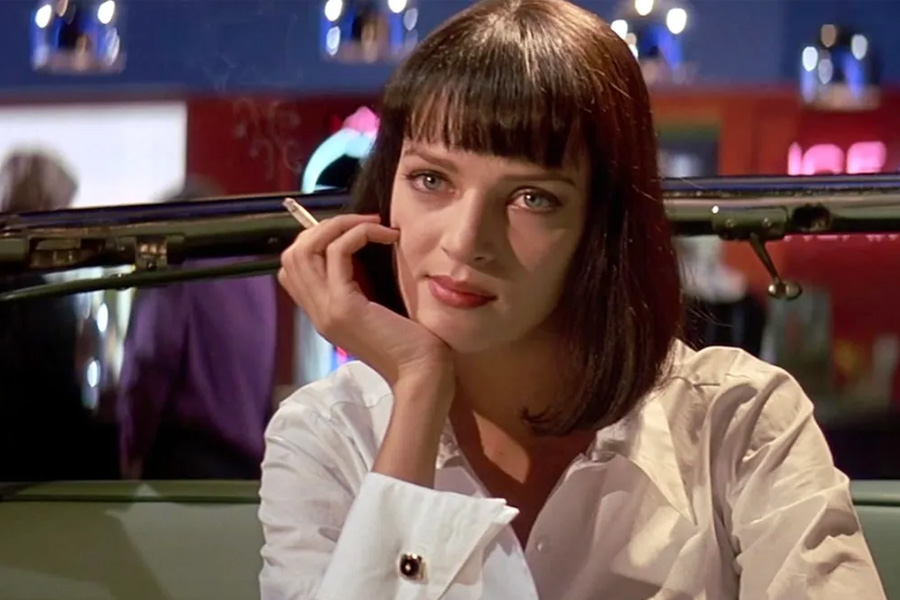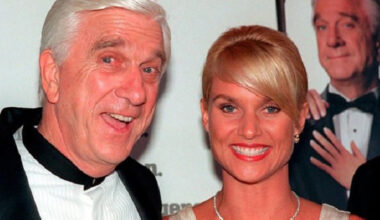Basic Information
| Field | Details |
|---|---|
| Full Name | Uma Karuna Thurman |
| Born | April 29, 1970 |
| Birthplace | Boston, Massachusetts, USA |
| Occupations | Actress, model, producer |
| Years Active | 1985–present |
| Parents | Robert Thurman (Tibetan Buddhism scholar); Nena von Schlebrügge (model) |
| Siblings | Ganden Thurman; Dechen Thurman; Mipam Thurman |
| Marriages | Gary Oldman (1990–1992); Ethan Hawke (1998–2005) |
| Partner | Arpad Busson (former fiancé) |
| Children | Maya Hawke (1998); Levon Roan Thurman-Hawke (2002); Rosalind “Luna” Thurman-Busson (2012) |
| Notable Awards | Academy Award nominee (Pulp Fiction); Golden Globe winner (Hysterical Blindness) |
| Signature Roles | Mia Wallace (Pulp Fiction); The Bride/Beatrix Kiddo (Kill Bill); Poison Ivy (Batman & Robin) |
A Life in Frames
Uma Thurman’s ascent is a study in shapeshifting. From austere period pieces in the late 1980s to high-gloss franchise fare and the indelible silhouette of a katana-wielding avenger in the 2000s, she’s navigated the industry’s currents for nearly four decades. Her breakthrough arrived early with Dangerous Liaisons (1988), a role that announced a performer capable of danger wrapped in poise. In 1994, she detonated the zeitgeist as Mia Wallace in Pulp Fiction, a part that spun dialogue, menace, and wit into a pop-culture archetype. The 2003–2004 two-part saga of Kill Bill turned her into a myth—an action heroine equal parts grace and grit.
Thurman’s career reads like a map of modern cinema: independent audacity alongside studio spectacle, character studies next to genre fireworks. She has made more than 50 film appearances, toggling between auteurs and crowd-pleasers, always testing the boundaries of persona and presence.
Family Roots & Relationships
The Thurman family story begins with contrasts: Buddhist scholarship and runway elegance. Her father, Robert Thurman, helped popularize Tibetan studies in the West; her mother, Nena von Schlebrügge, was a high-fashion model. That dual heritage—intellectual rigor and artistic glamour—threads through Uma’s work, where philosophy can underlie a glance and style can sharpen a line reading. Growing up with brothers Ganden, Dechen, and Mipam, she found balance between private life and public vocation early on.
Her personal relationships have often intersected with the industry. She married Gary Oldman in 1990 at the dawn of her film career, and later married Ethan Hawke in 1998; they divorced in 2005. With Hawke, she shares two children—Maya and Levon—both of whom have stepped into performing careers. With financier Arpad Busson, Thurman welcomed daughter Luna in 2012. As her children’s careers have accelerated, Thurman’s public persona has evolved again: from ingenue to icon to mentor, the spotlight subtly reframed by legacy.
Selected Uma Thurman Movies List
Below is a curated, career-spanning selection highlighting pivotal roles, cultural touchstones, and craft milestones.
| Year | Title | Role | Notes/Highlights |
|---|---|---|---|
| 1987 | Kiss Daddy Goodnight | Laura | Feature debut |
| 1988 | Dangerous Liaisons | Cécile de Volanges | Early breakthrough |
| 1990 | Henry & June | June Miller | Boundary-pushing drama |
| 1994 | Pulp Fiction | Mia Wallace | Academy Award nomination |
| 1996 | Beautiful Girls | Andera | Ensemble standout |
| 1997 | Gattaca | Irene Cassini | Elegant sci‑fi classic |
| 1997 | Batman & Robin | Poison Ivy | Cult-favorite villain |
| 1998 | Les Misérables | Fantine | Literary adaptation |
| 1998 | The Avengers | Emma Peel | 1960s TV reboot |
| 2003 | Kill Bill: Vol. 1 | The Bride/Beatrix Kiddo | Defining action role |
| 2004 | Kill Bill: Vol. 2 | The Bride/Beatrix Kiddo | Closing the saga |
| 2005 | Be Cool | Edie Athens | Crime-comedy reunion with Travolta |
| 2005 | The Producers | Ulla | Big-screen musical |
| 2005 | Prime | Rafi Gardet | Romantic dramedy |
| 2006 | My Super Ex-Girlfriend | Jenny Johnson/G-Girl | Superhero rom-com |
| 2009 | Motherhood | Eliza Welch | Indie portrait of NYC parenting |
| 2010 | Percy Jackson & the Olympians: The Lightning Thief | Medusa | Fantasy franchise |
| 2012 | Bel Ami | Madeleine Forestier | Belle Époque intrigue |
| 2013 | Nymphomaniac: Vol. I | Mrs. H | Scene-stealing turn |
| 2018 | The Con Is On | Harriet | Heist comedy |
| 2018 | Down a Dark Hall | Madame Duret | Gothic mystery |
| 2018 | The House That Jack Built | Woman in car | Provocative cameo |
| 2023 | Red, White & Royal Blue | President Ellen Claremont | Rom-com with bite |
| 2023 | The Kill Room | Patrice Capullo | Crime, art, and satire |
| Upcoming | The Old Guard sequel | — | Return to action terrain |
This list sketches the arc: a late-’80s takeoff, a mid-’90s supernova, early-2000s reinvention, and a 2010s–2020s period defined by range—arthouse audacity, genre play, and nimble cameos.
Milestones & Accolades
- 1994–1995: Pulp Fiction earns her an Academy Award nomination, BAFTA and SAG recognition, and a permanent place in cinematic iconography.
- 2003–2004: Kill Bill Vol. 1 and Vol. 2 redefine the action heroine for a new century, pairing balletic violence with maternal ferocity.
- Golden Globe success: She won a Golden Globe for Hysterical Blindness, proving her magnetism in intimate, small-screen storytelling as surely as on the big screen.
- Persistent versatility: From satirical supervillains to historical figures and anxious modern mothers, Thurman treats genre as a palette, not a boundary.
Craft, Choices, and Cultural Impact
Thurman’s hallmark is precision. She can turn a line into a blade or a whisper into a monologue. In Pulp Fiction, the smallest gestures—the tilt of a bob, a sigh in a diner booth—became cinematic shorthand. In Kill Bill, physical storytelling dominates: footwork, breath control, a swordswoman’s poise under pressure. The range is deliberate. She will swing from sardonic comedy (Be Cool) to folk-legend gravitas (Les Misérables) without fraying the thread of credibility.
Across more than 30 years, Thurman has also embraced television and stage, enlarging the canvas. Her Broadway lead in The Parisian Woman (2017) showcased crisp timing and sustained presence; television projects in the 2010s and 2020s revealed a comfort with long-arc character building. When she surfaces in a cameo—The House That Jack Built, for instance—it’s often to leave a mark that outlasts the scene.
Family as Throughline
The Thurman-Hawke children’s rise connects generations. Maya Hawke, born 1998, has built a dual career in acting and music; Levon Roan, born 2002, has used music and screen work to explore his own voice. Luna, born 2012, is still young, but their family’s interplay—artists talking craft across the kitchen table—feels like an heirloom. Meanwhile, Uma’s parents remain touchstones in her narrative: scholarship and style, reflection and reinvention. If her screen persona is often a storm, the family is the barometer—quietly calibrating, always there.
FAQ
What is Uma Thurman best known for?
Her defining roles are Mia Wallace in Pulp Fiction and The Bride in Kill Bill, both career-making and culturally iconic.
How many films has she appeared in?
She has appeared in more than 50 films across drama, comedy, action, and arthouse cinema.
Did she win an Oscar?
No, but she received an Academy Award nomination for Pulp Fiction.
Which awards has she won?
She won a Golden Globe for Hysterical Blindness and has received multiple major nominations across her career.
Who are her parents?
Her father is Buddhist scholar Robert Thurman, and her mother is former model Nena von Schlebrügge.
Who are her children?
Maya Hawke (1998), Levon Roan Thurman-Hawke (2002), and Rosalind “Luna” Thurman-Busson (2012).
Who were her spouses?
She married Gary Oldman (1990–1992) and Ethan Hawke (1998–2005).
What are notable recent films?
Recent highlights include Red, White & Royal Blue (2023) and The Kill Room (2023), with a return to action in the upcoming sequel to The Old Guard.



